APRENDO LEYENDO
Multisensory Reading Instruction
- English
- Español
CONTEXT
While people in the 21st century will read and write more than at any other time in human history, in Latin America, over 35 million people over the age of 15 are illiterate (representing about 10% of this age group).
Lack of access to general education, material or guidance are strong factors explaining low literacy levels in developing countries. However, even in developed countries about 20% of 15-year-olds do not attain a level of reading performance that allows them to participate effectively in life (Organisation for Economic Cooperation and Development, 2016).
Outdated and inappropriate teaching methods are also responsible for ineffective learning and substandard comprehension, writing skills, and overall skills in communication. While research has provided answers and guidance for the best ways of teaching how to read and write, there remains a strong dichotomy between the recommended teaching methods and the practices in the schools. Tradition, misbelieve, force of habit hinder the implantation of appropriate learning methods (Castles, Rasles & Nation, 2018).
Knowing the inefficiency of the current teaching methods and the availability of accurate, effective and accessible teaching methods, it is essential to break this glass wall and implement and support appropriate educational practices on the ground to fight illiteracy everywhere it can be avoided.
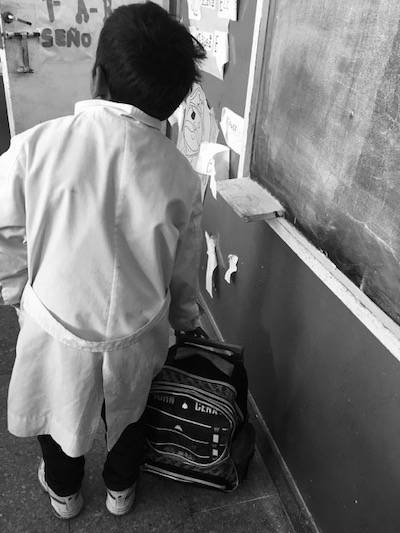
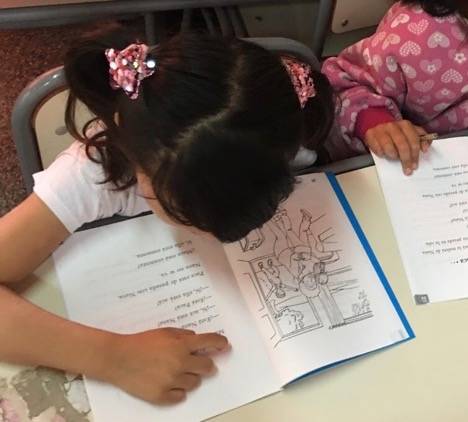
OBJECTIVES
The current project focuses on bringing state of the art, multisensorial, scientific-based Spanish learning method, Aprendo Leyendo, for at-risk children in Latin America. This includes two core components:
- Objective 1: Increasing the literacy level of as-risk children
- Objective 2: Incorporate evidence-based practices for the teaching of reading in the classrooms.
Aprendo Leyendo is a comprehensive program for teaching beginning reading using multisensory techniques supported by scientific research. Aprendo Leyendo incorporates reading, spelling, and handwriting instruction into unified lessons that benefit all children, and can prevent reading failure in at-risk children.
Today, 13,000 kids are learning to read with Aprendo Leyendo and we have trained more than six hundred teachers.
What are some of the research-based practices in Aprendo Leyendo?
- Explicit phonics lessons
- A sequence of concepts
- Monitored oral reading
- Repeated reading
- Decodable text
- Integrating reading, spelling, and handwriting in one lesson
- Comprehension strategies
ACTIVITIES
- Activity 1: Providing a minimum of 16 hours of professional development to 1364 teachers in the province of Jujuy.
- Activity 2: Providing materials to 24,000 students (grade 1 & 2) for 2 years:
- Teacher handbook (Manual para el Maestro de Aprendo Leyendo), with details on how to plan, organize and teach each class.
- Access to an online platform (Plataforma Digital Aprendo Leyendo), where teachers can watch a master teacher in a classroom, teaching (and modeling) to children all the parts of a lesson.
- Three sets of alphabet cards, to teach and review phonemes.
- For each child in the first and second grade, 4 skills books and 3 decodable chapter books (that include the first four levels of the program), to practice reading -fluency and comprehension- handwriting, and spelling.
- Proficiency tests, to assess student progress at the end of each level.
- Activity 3: Providing weekly support throughout the year via WhatsApp to the educators.
- Activity 4: Designing and implementing a research assessment project with the following aims:
- To establish the overall efficacy of Aprendo Leyendo in comparison to a ‘business as usual’ control group.
- To understand individual differences in response to the program (i.e., what work for whom, and why?).
- Activity 1: Providing a minimum of 16 hours of professional development to 430 teachers, in 78 schools, reaching 10,000 students in Argentina.
- Activity 2:Providing materials to 430 teachers, in 78 schools and to 10,000 students in Argentina:
- Teacher handbook (Manual para el Maestro de Aprendo Leyendo), with details on how to plan, organize and teach each class.
- Access to an online platform (Plataforma Digital Aprendo Leyendo), where teachers can watch a master teacher in a classroom, teaching (and modeling) to children all the parts of a lesson.
- Three sets of alphabet cards, to teach and review phonemes.
- For each child in the first and second grade, 4 skills books and 3 decodable chapter books (that include the first four levels of the program), to practice reading -fluency and comprehension- handwriting, and spelling.
- Proficiency tests, to assess student progress at the end of each level.
- Activity 3: Providing instruction by classroom teachers 4 sessions per week for a minimum of 45 minutes each time.
- Activity 4:For a representative group of 300 students, providing instruction from visiting Aprendo Leyendo master teachers at least 3 times a week for 45 minutes each time, to guarantee fidelity in delivery of instruction.
- Activity 5: For a representative group of 300 students, evaluating student progress using the IDELS First Grade level subtests administered 3 times during the school year, with supplementation by other assessments (RAN, PPVT) to cover factors not addressed directly by the IDELS.
Abstract
A multi-sensory structured language reading program was deployed in six first grade public school classrooms (n=150 students) in Buenos Aires, Argentina. Six control rooms used business-as-usual, whole language, instruction (n=178 students). Control and treatment rooms were well-matched in initial status. Students’ abilities and progress were recorded 3 times over 27 weeks using a test battery covering basic pre-reading and reading skills: phonological awareness, decoding, vocabulary, rapid automatized naming, and executive function. At the start of 1st grade, most students have no measurable capacity for decoding. Many struggle with phonological awareness and letter naming. Very high rates of absenteeism and school closures (similar in both groups) meant that planned treatment dosage was not achieved. However, at the endpoint of the study, students in MSL classrooms show an advantage over those in control classrooms in sentence reading comprehension, but the groups remain at parity in other measured skills.
Click HERE for the full report
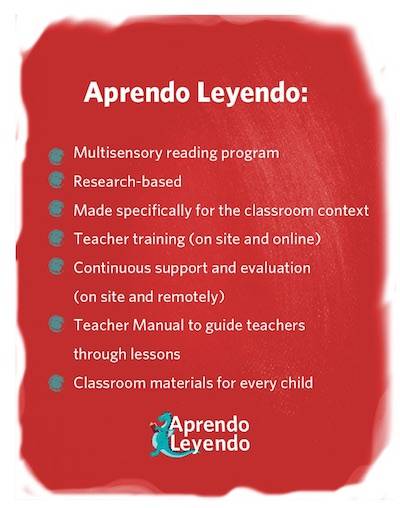
If you want more information about Aprendo Leyendo and how to implement it, contact the team!
Using this form will automatically enroll the email address provided in the Haskins Global Literacy Hub Newsletter.
CONTEXTO
Si bien las personas en el siglo XXI leerán y escribirán más que en cualquier otro momento de la historia de la humanidad, en América Latina más de 35 millones de personas mayores de 15 años son analfabetas (lo que representa aproximadamente el 10% de este grupo de edad).
La falta de acceso a la educación, los materiales o la orientación en la enseñanza son factores importantes que explican los bajos niveles de alfabetización en los países en desarrollo. Sin embargo, incluso en los países desarrollados, alrededor del 20% de los jóvenes de 15 años no alcanzan un nivel de desempeño en lectura que les permita participar de manera efectiva en la vida (Organización para la Cooperación y el Desarrollo Económicos, 2016).
Los métodos de enseñanza obsoletos e inapropiados también son responsables de un aprendizaje ineficaz, una deficiente comprensión y pocas habilidades de escritura y de comunicación. Si bien la investigación ha proporcionado respuestas y orientaciones sobre las mejores formas de enseñar a leer y escribir, sigue existiendo una fuerte dicotomía entre los métodos de enseñanza recomendados y las prácticas en las escuelas. La tradición, la fuerza de la costumbre dificultan la implantación de métodos de aprendizaje adecuados (Castles, Rasles & Nation, 2018).
Conociendo la ineficacia de los métodos de enseñanza actuales y teniendo acceso a métodos de enseñanza precisos, efectivos y accesibles, es fundamental romper este muro de cristal e implementar y apoyar prácticas educativas adecuadas para combatir el analfabetismo en todos los lugares donde se pueda evitar.


OBJETIVOS
El proyecto se centra en llevar Aprendo Leyendo, un programa de alfabetización en español multisensorial con base científica a niños en situación de riesgo en América Latina. Esto incluye dos componentes principales:
- Objetivo 1: Aumentar el nivel de alfabetización de los niños en riesgo.
- Objetivo 2: Incorporar prácticas basadas en evidencias científicas para la enseñanza de la lectura en el aula.
Aprendo Leyendo es un programa áulico de enseñanza de lectura. Está especialmente desarrollado para que, a través de él, los niños adquieran precisión, automaticidad y fluidez para alcanzar un óptimo nivel de comprensión lectora. El programa incorpora prácticas de enseñanza basadas en la última evidencia científica disponible sobre el cerebro durante el proceso de alfabetización.
Actualmente, 13.000 niños están aprendiendo a leer con Aprendo Leyendo y hemos capacitado a más de seiscientos docentes.
¿Cuáles son algunas de las prácticas basadas en la investigación de Aprendo Leyendo?
- Instrucción fónica explícita
- Instrucción gradual y progresiva
- Lectura oral supervisada
- Lecturas repetidas
- Uso de textos con lenguaje controlado
- Integración de lectura, ortografía y caligrafía en una lección
- Enseñanza explícita de estrategias de comprensión
ACTIVIDADES
- Actividad 1: Brindar un mínimo de 16 horas de capacitación a 430 docentes, en 78 escuelas, llegando a 10,000 estudiantes en Argentina.
- Actividad 2: Entrega de materiales a 430 docentes, en 78 escuelas y a 10,000 estudiantes en Argentina:
- Manual para el Maestro de Aprendo Leyendo, con detalles sobre cómo planificar, organizar y enseñar cada clase.
- Acceso a una plataforma en línea (Plataforma Digital Aprendo Leyendo), donde los docentes pueden ver a un maestro experto en el aula, enseñando (y modelando) a los niños cada una de las partes de una clase.
- Tres juegos de tarjetas del abecedario, para enseñar y repasar fonemas.
- Para cada niño de primer y segundo grado, 4 cuadernillos de actividades y 3 libros de cuentos con lenguaje controlado (que incluyen los primeros cuatro niveles del programa), para practicar la lectura -fluidez y comprensión- caligrafía y ortografía.
- Evaluaciones finales de cada cuadernillo, para evaluar el progreso del estudiante al final de cada nivel.
- Actividad 3: Proporcionar instrucción por parte de los maestros del aula 4 sesiones por semana durante un mínimo de 45 minutos cada vez.
- Actividad 4: Para un grupo representativo de 300 estudiantes, brindar instrucción de maestros expertos de Aprendo Leyendo al menos 3 veces por semana durante 45 minutos cada vez, para garantizar la fidelidad en la instrucción brindada a los alumnos.
- Actividad 5 : Para un grupo representativo de 300 estudiantes, evaluar el progreso de los mismos utilizando las subpruebas de nivel de primer grado de IDELS. Administradas 3 veces durante el año escolar, sumadas a otras evaluaciones (RAN, PPVT) para cubrir factores que IDELS no abordan directamente.
Informe de evaluación del primer año de las Actividades 4 y 5

Programa de Lectura multisensorial
Basado en evidencia científica
Desarrollado específicamente para el ámbito escolar
Capacitación docente (presencial y online)
Acompañamiento y seguimiento (presencial y online)
Manual del Maestro con detalles sobre cómo planificar, organizar y enseñar cada clase
Materiales para los niños: Cuadernillos y Cuentos
Si quieres más información sobre Aprendo Leyendo y cómo implementarlo, ¡contactate con el equipo!
El uso de este formulario inscribirá automáticamente la dirección de correo electrónico en el boletín de Haskins Global Literacy Hub.
The team
Partners
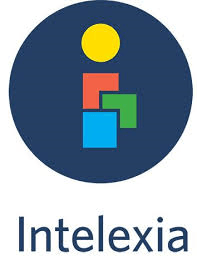
Intelexia
Intelexia has created “Aprendo Leyendo”, a holistic reading education program developed to give children precision, automaticity and fluency to reach an optimum level of reading comprehension.
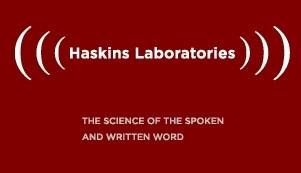
Haskins Laboratories
Haskins Laboratories is a private, not-for-profit research institute founded in 1935, with a scientific mission to investigate the biological basis of speech, language and reading, and their related disabilities. Together with long-standing collaborators from University of Connecticut, Yale University, and over 40 international partners, Haskins has pioneered the scientific theories that guide current clinical and educational remediations for speech and reading disabilities, including the motor theory of speech perception, the orthographic depth hypothesis, the phonological basis of dyslexia, and the neurobiological system that supports reading. The over-arching mission of the Laboratories is to leverage cutting-edge science to enable those with language impairments to participate more fully in society.








